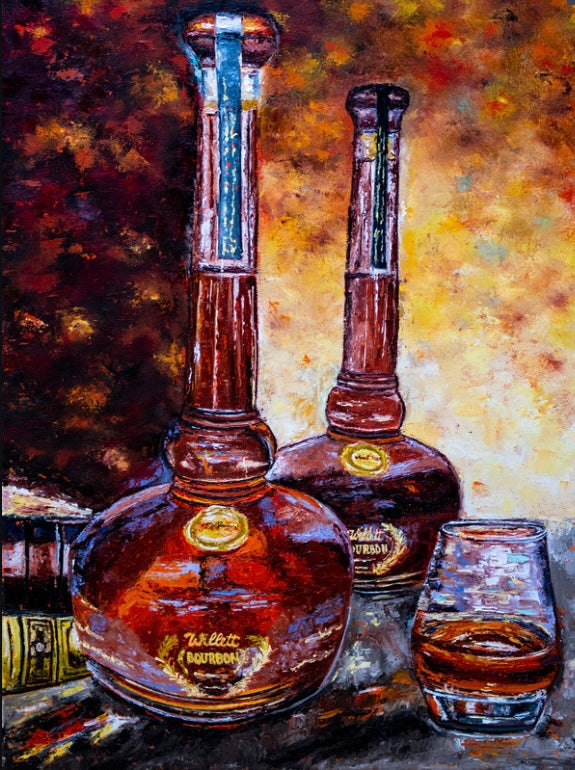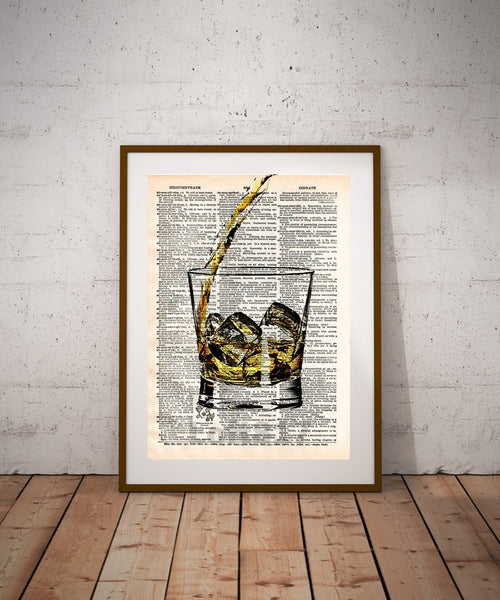Discover the World of Bourbon Art: A Journey Via Culture and Craftsmanship
Discover the World of Bourbon Art: A Journey Via Culture and Craftsmanship
Blog Article
The Relevance of Whiskey Art in Celebrating Heritage and Workmanship in the Beverage Industry
The intricate connection between scotch art and the event of heritage and workmanship within the drink sector can not be overemphasized. With attentively designed containers and labels, scotch brands envelop their historical origins and the artisanal abilities that specify their manufacturing techniques. This imaginative dimension not just improves market charm but additionally functions as a channel for cultural narration, cultivating a much deeper link in between the consumer and the craft. As we explore the numerous elements of this subject, interesting concerns regarding the impact of contemporary patterns on standard practices emerge, prompting additional assessment.
The Historical Origins of Whiskey
At the heart of scotch's attraction lies an abundant tapestry of historic roots that trace back to ancient people. The origins of whiskey can be linked to the purification methods of the Sumerians and Babylonians around 2000 BCE, where early types of fermented grain beverages started to emerge. It was in the Middle Ages that the art of purification developed significantly, specifically in Ireland and Scotland, leading to the development of scotch as we understand it today.
The term "scotch" itself stems from the Gaelic word "uisce beatha," indicating "water of life." This expression highlights the cultural importance of bourbon in Celtic cultures, where it was frequently connected with rituals, events, and common bonding. By the 15th century, distillation ended up being an acknowledged craft within monastic areas, paving the method for the facility of lawful distilleries.
As profession paths broadened, bourbon's popularity expanded, transcending local borders and catching the interest of lovers worldwide. Whiskey Art. This historical journey shows not just the craftsmanship behind scotch manufacturing however also its important duty in social and social contexts, noting it as a substantial beverage throughout history
Artistic Expression in Branding
Bourbon branding stands as an engaging intersection of virtuosity and commerce, where visual identity plays an important function in forming customer perception. The visual appeals of whiskey labels, product packaging, and marketing materials reflect not only the brand's tale but also its core values and heritage. Through imaginative expression, distilleries convey a narrative that reverberates with customers, stimulating emotions and sparking links.
Making use of color, typography, and imagery in branding serves to set apart items in a saturated market. For example, traditional concepts might stimulate a sense of credibility and craftsmanship, while modern-day designs can signify technology and forward-thinking. This critical creative instructions enhances brand name recognition and commitment, permitting consumers to forge a personal relationship with the scotch they choose.
Furthermore, creative expression in branding commonly acts as an event of regional heritage. Distilleries regularly incorporate local icons or historical referrals into their designs, creating a feeling of area that welcomes customers to take part in a more comprehensive social experience. Eventually, the creativity behind whiskey branding not only improves aesthetic allure however likewise enhances the overall story of the brand, cultivating a much deeper appreciation for the craftsmanship and heritage ingrained in each bottle.
Workmanship in Container Design
The artistry apparent in whiskey branding expands past visual identification to encompass the craftsmanship associated with bottle design. Each bottle offers as a vessel not just for the spirit within, however likewise for the tale it tells concerning its quality, practice, and beginning. The style process needs meticulous focus to more information information, as elements such as material, closure, and form add substantially to the general assumption of the whiskey.
Workmanship in bottle style involves picking high-quality glass that can improve the whiskey's shade and clearness, while additionally providing a tactile experience for the consumer. The silhouette of the bottle must be both aesthetically enticing and functional, often showing the heritage of the brand name. Lots of distilleries opt for one-of-a-kind forms or embossed logos that evoke a feeling of authenticity and background.
Additionally, the tag style and typography play a critical duty in connecting the brand name's narrative. Whiskey Art. A well-crafted bottle not only astounds the customer's eye however likewise enhances the brand name's dedication to high quality and tradition. This way, the workmanship of bottle layout ends up being a crucial aspect of the bourbon experience, combining virtuosity with an extensive respect for heritage
Cultural Value of Bourbon Art
Commemorating practice and craftsmanship, the social relevance of bourbon art goes beyond simple aesthetics, intertwining with the historical and social narratives of the areas from which it originates. Each container works as a canvas, illustrating the special stories, folklore, and traditions that have actually formed neighborhood whiskey-making methods. The detailed designs commonly mirror the heritage of the distillers, integrating symbols and concepts that reverberate with the culture and values of their communities.

In addition, scotch art plays an important function in public gatherings and events, working as a tangible web link in between people and their shared experiences. By appreciating the artistry in whiskey product packaging, consumers grow a much deeper understanding and respect for the craft, ultimately enriching their enjoyment of the beverage itself.
Modern Trends in Scotch Discussion
Over the last few years, the presentation of scotch has progressed to reflect modern tastes and trends while still honoring traditional craftsmanship - Realism Art. Distilleries are increasingly concentrating on visual components that boost the general alcohol consumption experience, bridging the gap between heritage and modernity
Ingenious container designs have arised, often including lasting products and imaginative tags that inform compelling tales. Lots of brands now work together with neighborhood artists, infusing their items with one-of-a-kind visual expressions that resonate with customers. Additionally, limited-edition releases are commonly packaged in collectible containers, including value and allure for connoisseurs.

Final Thought
In final thought, whiskey art functions as a vital channel for sharing the heritage and workmanship inherent in the beverage sector. Through intricate branding, ingenious container designs, and culturally significant creative aspects, bourbon brands successfully recognize their practices and get in touch with consumers. This imaginative narrative not just elevates the recognition of whiskey but additionally strengthens community identification and satisfaction amongst producers. Ultimately, whiskey art plays a crucial role in preserving and commemorating the abundant social tapestry go to the website of whiskey-making.


Craftsmanship in container layout entails selecting top quality glass that can improve the bourbon's color and quality, while also giving a tactile experience for the consumer. In this method, the workmanship of bottle design becomes an important element of the bourbon experience, merging virtuosity with an extensive respect for heritage.
In conclusion, whiskey art serves as a vital conduit for sharing the heritage and craftsmanship inherent in the drink sector.
Report this page